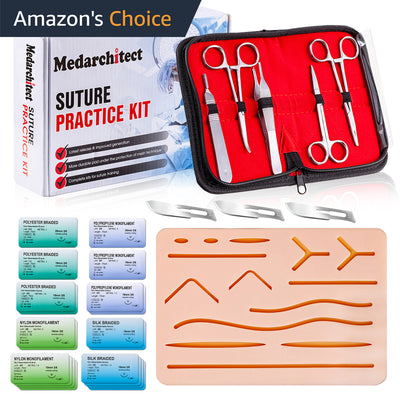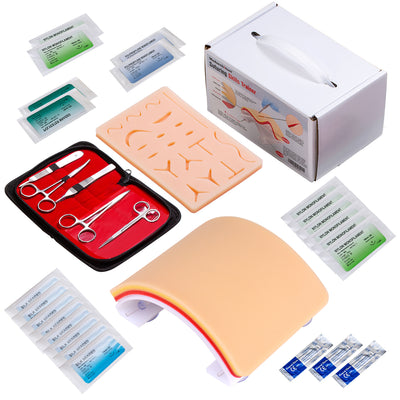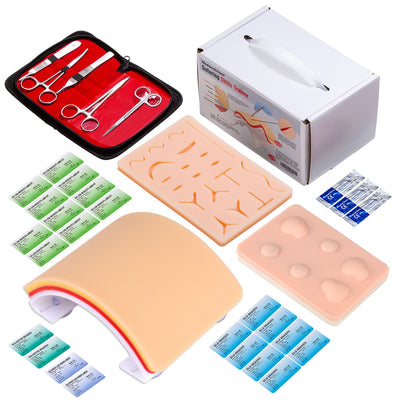The terms phlebotomy and venipuncture are often confused or used interchangeably. Although they are closely related, they are not exactly the same thing. So what's the difference between phlebotomy and venipuncture?
Let's break it down.

Phlebotomy vs Venipuncture: Difference
What is Venipuncture?
Venipuncture is the specific action of puncturing a vein with a needle in order to collect a blood sample or to administer intravenous fluids. This method is commonly used to
- Collecting blood samples
- Administering medications
- Administering fluids or nutrients intravenously
It is an essential clinical skill for nurses, paramedics, doctors and other healthcare professionals. The key to venipuncture is technique - finding the right vein, inserting the needle correctly, and ensuring that patient discomfort and risk are minimized.
What is Phlebotomy?
On the other hand, phlebotomy is a complete process that includes puncture, blood collection, and handling of blood, that is, a complete process. It includes venipuncture as one of the core techniques.
Compared to Venipuncture, Phlebotomy emphasizes more on the completeness of the whole blood collection process, including the puncture action, blood extraction, sample collection, processing and follow-up care, rather than just the single action of puncture. In other words, Phlebotomy focuses on the management and safe operation of the entire process from start to finish.
Phlebotomy is usually performed by trained phlebotomists who specialize in blood collection and follow strict protocols to maintain specimen integrity and patient safety.
Key Differences
Here's a simple comparison to clarify the distinction:
| Comparison Aspect | Venipuncture | Phlebotomy |
| Definition | The technical act of puncturing a vein | The complete process of blood collection, including puncture and sampling |
| Main Content | Inserting a needle into a vein | From puncture to blood withdrawal, sample handling, and aftercare |
| Purpose | To establish venous access or collect blood | To collect blood for testing, therapeutic phlebotomy, or donation |
| Application Scope | Blood draw, infusion, injection, etc. | Mainly blood collection for diagnostic testing and therapeutic purposes |
| Operator | Nurses, doctors, technicians | Mainly specialized phlebotomists |
| Key Focus | Accuracy and safety of the puncture | Integrity of the blood collection process and sample quality |
| Included Steps | Puncture and needle stabilization | Puncture, blood withdrawal, sample collection, labeling, and aftercare |
| Clinical Significance | Basic technical skill | Critical step in blood collection management and clinical testing |
As you can see, phlebotomy vs venipuncture isn't about one being better or more important than the other—it’s about understanding how they fit together in patient care.
Why Understanding the Difference Matters
Understanding the difference between phlebotomy and phlebotomy is critical for healthcare professionals and trainees as it clarifies the scope of each skill and ensures proper training and practice. Misunderstanding of these terms can lead to confusion about roles and responsibilities in the clinical setting.
For example, mastery of venipuncture alone does not guarantee competence in the entire process of blood collection, as there are multiple steps involved in addition to puncturing the needle.
Additionally, understanding these distinctions improves communication among the healthcare team, supports patient safety by emphasizing the importance of process management, and guides educational programs to appropriately tailor training content. Ultimately, this knowledge helps ensure quality care and accurate diagnostic results.
Training Differences and Key Skills to Master in Venipuncture and Phlebotomy
In terms of training, venipuncture and phlebotomy require different emphases.
- Venipuncture Training:
Venipuncture training emphasizes the acquisition of technical skills to accurately and safely puncture a vein, including vein selection, needle angulation, and aseptic technique. Trainees often practice repeatedly on simulation models to perfect this critical step.
Mastering venipuncture requires precise hand-eye coordination, thorough knowledge of vein anatomy, and strict adherence to sterile techniques. Practitioners must be skilled at selecting appropriate veins, controlling needle angle and depth, and minimizing patient discomfort.
- Phlebotomy Training:
In contrast, phlebotomy training covers the entire blood collection process. In addition to venipuncture, it includes sample collection and handling, patient communication, management of complications such as fainting or bleeding, and proper postoperative care.
Phlebotomy demands a broader skill set that extends beyond venipuncture. It includes effective patient communication to ease anxiety, accurate blood sample handling to prevent contamination or mislabeling, managing potential complications such as hematoma or fainting, and proper postoperative care. It includes effective patient communication to ease anxiety, accurate blood sample handling to prevent contamination or mislabeling, managing potential complications such as hematoma or fainting, and providing proper post-procedure care.
It is designed to develop the ability to perform the entire procedure independently, ensuring patient safety and sample quality. As a result, phlebotomy training tends to be more comprehensive and longer in duration.
Conclusion
So, phlebotomy vs. venipuncture - what's the difference? In a nutshell: Venipuncture is the act of “inserting a needle into a vein”, like opening a door. Phlebotomy, on the other hand, is the whole process of “drawing blood through the door”, including the puncture, the drawing of blood, and the collection of the blood sample.
By learning the nuances and practicing with high-quality simulation tools, you'll be better prepared to provide safe, accurate and compassionate care.
👉 Looking for training models to improve your phlebotomy or venipuncture technique? Explore Medarchitect Phlebotomy & Venipuncture Practice Tools here and get hands-on faster with realistic, customizable simulation products.









